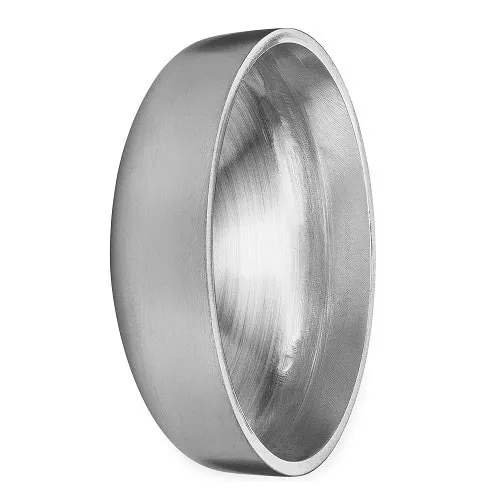-
Cangzhou Yulong Steel Co., Ltd.
-
Phone:
+86 13303177267 -
Email:
admin@ylsteelfittings.com
- English
- Arabic
- Italian
- Spanish
- Portuguese
- German
- kazakh
- Persian
- Greek
- French
- Russian
- Polish
- Thai
- Indonesian
- Vietnamese
- Zulu
- Korean
- Uzbek
- Hindi
- Serbian
- Malay
- Ukrainian
- Gujarati
- Haitian Creole
- hausa
- hawaiian
- Hebrew
- Miao
- Hungarian
- Icelandic
- igbo
- irish
- Japanese
- Javanese
- Kannada
- Khmer
- Rwandese
- Afrikaans
- Albanian
- Amharic
- Armenian
- Azerbaijani
- Basque
- Belarusian
- Bengali
- Bosnian
- Bulgarian
- Catalan
- Cebuano
- China
- China (Taiwan)
- Corsican
- Croatian
- Czech
- Danish
- Esperanto
- Estonian
- Finnish
- Frisian
- Galician
- Georgian
- Kurdish
- Kyrgyz
- Lao
- Latin
- Latvian
- Lithuanian
- Luxembourgish
- Macedonian
- Malgashi
- Malayalam
- Maltese
- Maori
- Marathi
- Mongolian
- Myanmar
- Nepali
- Norwegian
- Norwegian
- Occitan
- Pashto
- Dutch
- Punjabi
- Romanian
- Samoan
- Scottish Gaelic
- Sesotho
- Shona
- Sindhi
- Sinhala
- Slovak
- Slovenian
- Somali
- Sundanese
- Swahili
- Swedish
- Tagalog
- Tajik
- Tamil
- Tatar
- Telugu
- Turkish
- Turkmen
- Urdu
- Uighur
- Welsh
- Bantu
- Yiddish
- Yoruba

Aug . 15, 2024 10:40 Back to list
Exploring the Techniques and Challenges of Pumping Solids in Various Industries and Applications
The Essentials of Pumps for Moving Solids
Pumps play a crucial role in various industrial applications, especially when it comes to transporting solids. The process of moving solids through piping systems requires specialized equipment designed to handle the unique challenges presented by solid materials. This article delves into the fundamentals of pumps that efficiently transport solids, addressing their types, applications, and operational considerations.
Understanding Solid Pumping
When solids are introduced into a pumping system, several factors come into play. Unlike liquids, solids can be abrasive, viscous, or possess varying shapes and sizes, each influencing how they should be pumped. The primary challenge is to maintain a steady flow of materials while minimizing damage to both the pump and the solids themselves.
The most common types of pumps used for moving solids are positive displacement pumps and centrifugal pumps. Each type is suited for different applications based on the properties of the solid being transported.
Types of Pumps
1. Positive Displacement Pumps - Mechanism These pumps operate by trapping a fixed volume of fluid or solid and forcing it through the discharge outlet. They provide consistent flow rates regardless of the pressure, making them ideal for high-viscosity materials or those that require gentle handling. - Applications Commonly used in applications such as food processing, wastewater treatment, and mining, positive displacement pumps can handle slurries, sludge, and bulk powders efficiently.
2. Centrifugal Pumps - Mechanism Centrifugal pumps work by converting rotational energy into hydrodynamic energy, creating a high-speed flow. While they are typically used for liquids, some centrifugal pumps are designed with modifications to accommodate slurry-like materials. - Applications These pumps are often found in applications involving mining operations, where they transport mixtures of water and solids. However, they can struggle with high solids concentration and require sufficient liquid to maintain performance.
Operational Considerations
pumps pumping solids

When selecting a pump for moving solids, several key factors need to be considered
1. Solid Characteristics Understanding the size, shape, and abrasiveness of the solid material is crucial. Pumps designed to handle abrasive particles will feature durable materials to minimize wear and tear.
2. Viscosity and Density The viscosity of the material can significantly impact the choice of pump. For denser or more viscous materials, positive displacement pumps may be more effective.
3. Flow Rate Requirements Different applications require varying flow rates. Positive displacement pumps are better suited for consistent, low flow rates, while centrifugal pumps can be effective for higher volume needs.
4. Maintenance and Reliability Regular maintenance is essential for pumps operating in solid transport scenarios due to potential wear from abrasive solids. Selecting pumps with easy maintenance features can reduce downtime and enhance reliability.
5. Cost and Energy Efficiency The total cost of ownership includes the initial purchase price, energy consumption, and maintenance costs. Evaluating the efficiency of different pump designs can lead to significant savings over time.
Conclusion
Pumps designed for solids are integral to various industries, ensuring the effective transportation of materials ranging from food products to mining by-products. Understanding the types of pumps available, as well as their operational requirements, is essential for any facility that depends on solid movement. By making informed choices, companies can optimize their processes, enhance efficiency, and maintain sustainable operations. As technology advances, we can expect even more efficient and durable pumping solutions tailored specifically for solid transport challenges.
Latest news
-
ANSI 150P SS304 SO FLANGE
NewsFeb.14,2025
-
ASTM A333GR6 STEEL PIPE
NewsJan.20,2025
-
ANSI B16.5 WELDING NECK FLANGE
NewsJan.15,2026
-
ANSI B16.5 SLIP-ON FLANGE
NewsApr.19,2024
-
SABS 1123 FLANGE
NewsJan.15,2025
-
DIN86044 PLATE FLANGE
NewsApr.19,2024
-
DIN2527 BLIND FLANGE
NewsApr.12,2024
-
JIS B2311 Butt-Welding Fittings LR/SR 45°/90° /180°Seamless/Weld
NewsApr.23,2024











